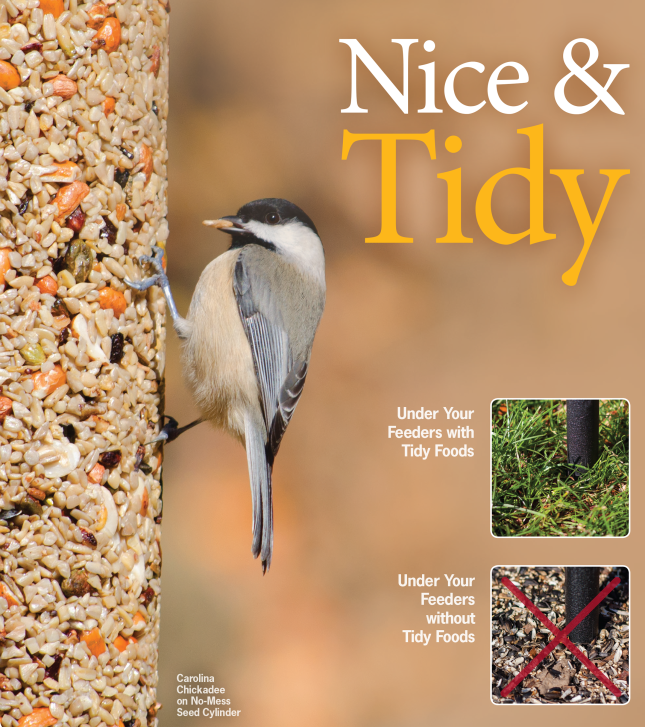Are You A Responsible Bird Feeder?
If you enjoy feeding and watching your backyard birds, then you probably want to do as much as you can to practice your hobby safely and ensure the birds’ overall health and well-being (and yours). Just as people can catch colds or other illnesses from people who are sick, birds that feed at crowded or dirty feeders have the potential to develop diseases that are harmful to them.
While the incidence of birds falling ill from feeders is small compared to other natural hazards birds face, there are things you can do to help your birds stay healthy:
- Provide multiple feeding stations in different areas of your yard to disperse bird activity.
- Provide seed from a bird feeder rather than scattering it on the ground.
- Keep areas clean under and around your feeders.
- Keep fresh seed in the feeder and be sure it doesn’t get moldy.
- Clean your bird feeders and baths regularly with a solution of one part bleach and 9 parts water.
As with any wildlife, you'll want to take steps to protect yourself when handling anything that is used by wild birds. Wash your hands thoroughly after touching feeders, bird baths, nest boxes, or any surfaces they regularly use. Some opt to use gloves when refilling or washing feeders. If you are sweeping, raking, or shoveling up debris beneath feeders, wear a face covering that will help prevent you from breathing in any harmful dust that may be kicked up (lightly spraying the area with water can help reduce dust). If you've been walking around areas with heavy seed and bird droppings, leave your shoes outside or in another safe space to avoid tracking bacteria through your home.
You can greatly reduce the mess created under feeders by using our No-Mess Blends. These are seed blends that have been hulled, so the food is 100% edible and won't create a mess of shells! 
What should I do if I see a sick bird?
There are two primary diseases that we see in our area. The first is avian conjunctivitis, also known as house finch eye disease, which is most common among House Finches and usually appears as swollen or crusty areas primarily around the eyes. This occurs sporadically among House Finches at all times of year, and can infrequently appear among other finch species. The less common avian pox has similar symptoms, affects the same birds, and should be responded to in the same way.
The second is salmonellosis, caused by salmonella bacteria. This disease is almost exclusively seen in winters when we have large numbers of Pine Siskins, a northern finch species that travels south in large numbers in so called “irruption years” of varying magnitude every few years. The symptoms of salmonellosis are puffed up feathers and extremely lethargic behavior—if the bird appears to be closing its eyes and does not respond to stimuli but remains perched when other birds flee, it is likely sick. It is overwhelmingly seen among Pine Siskins, but can spread to goldfinches and infrequently to other birds. This is the only common songbird disease that is communicable to pets and humans, so if you are seeing siskins with these symptoms make sure to keep cats and other pets away from birds and to wash your hands thoroughly after handling your feeders.
If you notice one or more birds exhibiting symptoms at your feeders, best practice is to remove all feeders to clean & disinfect them using a 10% bleach solution. Wait two weeks before you hang them back up to give birds a chance to disperse and limit the spread of illness.
If you find a dead bird, avoid handling it and keep pets and children away. If you must relocate it, do so with disposable gloves and thoroughly wash your hands with soap and hot water after.

